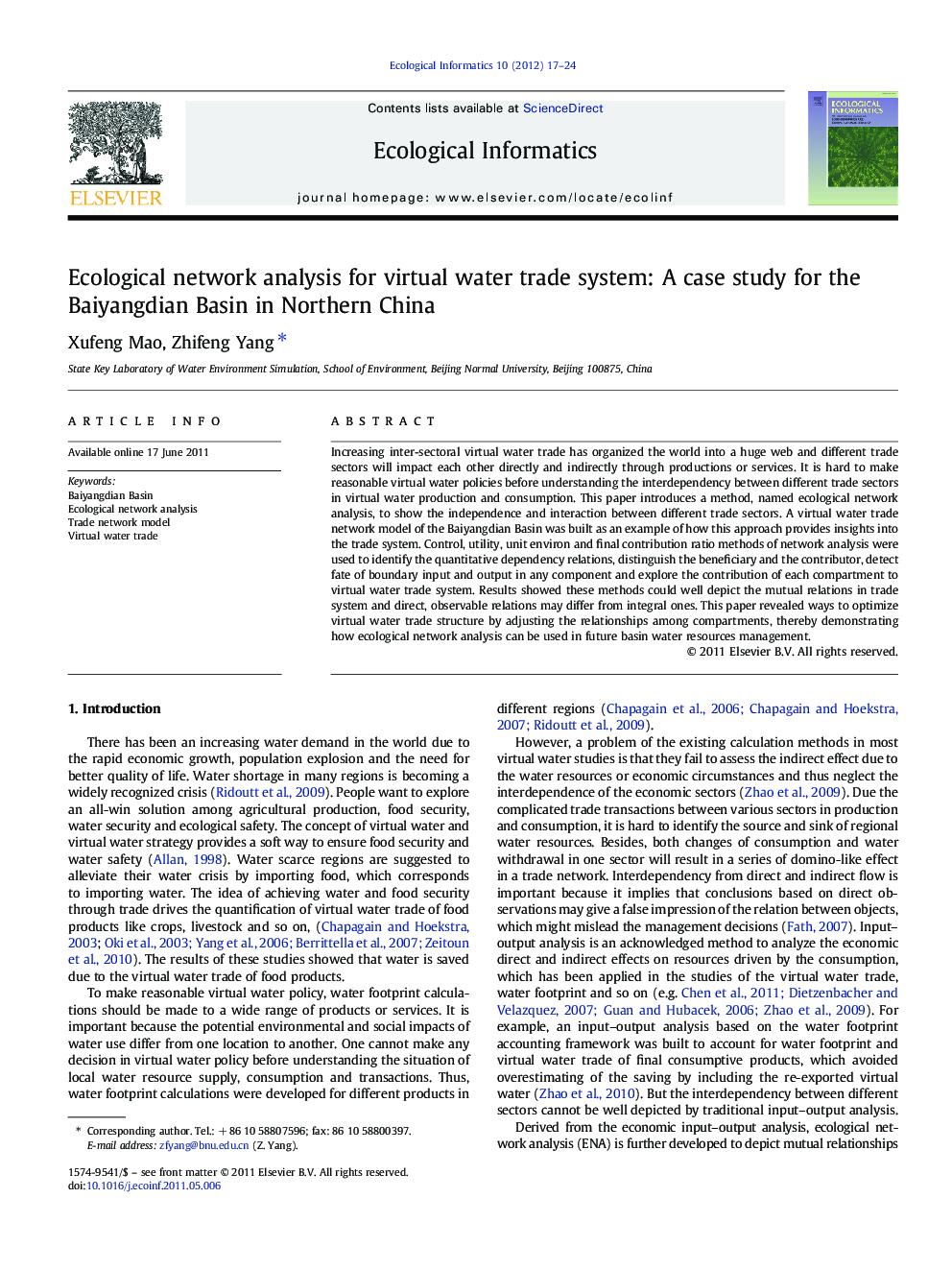| Article ID | Journal | Published Year | Pages | File Type |
|---|---|---|---|---|
| 4375063 | Ecological Informatics | 2012 | 8 Pages |
Increasing inter-sectoral virtual water trade has organized the world into a huge web and different trade sectors will impact each other directly and indirectly through productions or services. It is hard to make reasonable virtual water policies before understanding the interdependency between different trade sectors in virtual water production and consumption. This paper introduces a method, named ecological network analysis, to show the independence and interaction between different trade sectors. A virtual water trade network model of the Baiyangdian Basin was built as an example of how this approach provides insights into the trade system. Control, utility, unit environ and final contribution ratio methods of network analysis were used to identify the quantitative dependency relations, distinguish the beneficiary and the contributor, detect fate of boundary input and output in any component and explore the contribution of each compartment to virtual water trade system. Results showed these methods could well depict the mutual relations in trade system and direct, observable relations may differ from integral ones. This paper revealed ways to optimize virtual water trade structure by adjusting the relationships among compartments, thereby demonstrating how ecological network analysis can be used in future basin water resources management.
► We introduce the ecological network analysis to virtual water trade system. ► We investigate the mutual relationships among virtual water trade components. ► The Baiyangdian Basin in North China is selected as the study area. ► Results show the proposed method can inform basin-scale water resources management.
